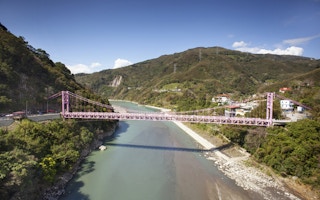Space technology is to be used to help engineers make the most of humanity’s oldest form of renewable energy production, water power.
There is vast potential for run-of-the-river hydropower schemes that use the natural flow of water to produce power without large-scale works. There are many thousand former mill sites around the world where the water power is still there but no longer utilised.
Many schemes are in operation – for example Queen Elizabeth II supports a turbine in the River Thames that powers her home, Windsor Castle – but many viable smaller-scale schemes have not been implemented.
The problem is that on-the-ground surveys, and in some countries complex planning rules, make investigating sites so expensive that it deters small-scale investors. Now a system has been developed using satellites and aircraft to measure the volume and fall of water and to decide whether schemes are viable without having to deal with bureaucracy.
“
The hydropower industry seems not to exploit stretches of river where there is obvious potential. The industry has gone, but the power has not. The potential for locally based power solutions remains
Andy Baxter, managing director of High Efficiency Heating UK Ltd
In England the University of Leicester will work with a British company, High Efficiency Heating UK Ltd, (HEH), with interests in renewable energies in order to locate the best sites to deploy micro-hydropower turbines. They have been granted £120,400 for a ten-month scheme to identify the best site in a river for power generation.
Local power
Micro-hydropower is a technology that could be used anywhere in the world. Run-of-the-river technology is already well established, with hundreds of schemes, some of them very large, but it has far great potential. It is particularly useful in hilly areas away from national grids, or for local communities to provide their own green power.
The expertise of the University of Leicester in geographical information systems (GIS) is key to cutting the costs. Andy Baxter, managing director of HEH, said: “Currently, to determine the viability of a stretch of river or stream for micro-hydropower, the process is expensive and complex.
“At present there’s a significant fee to pay to determine whether a particular stretch of river will yield hydropower – and this is before socio-economic factors and due processes such as planning applications are taken into account.”
Mr Baxter, who lives and works amongst the industrial heritage of the Lancashire mill towns in northern England, which used water power for centuries to make cloth for export, said: “Historically industry in this area was powered by the local rivers and streams – after all, the cotton industry grew up in Lancashire because of water power, but the hydropower industry seems not to exploit stretches of river where there is obvious potential. The industry has gone, but the power has not. The potential for locally based power solutions remains.”
The University uses images from satellites and aircraft to get a picture of the ground to measure whether the fall in the terrain and the volume of water will provide enough power output to justify a run-of-the-river turbine. As many as two dozen data sets will be put together on each site to get an accurate picture.
A thousand sites
So far in England, where there are more than a thousand disused mill sites where this technology could be used, progress has been slow, but the research team believe they can change this. Mr Baxter said: “We hope that the widespread proliferation of run-of-the-river micro-hydropower will help towards a stable, green, constant and predictable supply of power in the next few years.”
There have been warnings from electricity industry regulators that lack of investment in new power plants is leading to the danger of power cuts in England through lack of supply.
But Dr Kevin Tansey, who is leading the research team from the University’s department of geography, says it is not just England’s power problems he is interested in. It is the international dimension of helping the world defeat climate change that is most important.
“The current and growing concerns of climate and energy make this project of interest both nationally and internationally”, he says. “The University of Leicester’s involvement with commercial organisations to develop tools that are applicable at the local scale and globally is exciting and timely.”








